The Best Flowers for Bees To Plant In Your Gardens
With bee populations declining, the importance of growing flowers for bees has never been more apparent. As gardeners, we know the importance of our pollinators and understand that we need to protect and feed our bees. This article is a wonderful starting point for anyone interested in helping these essential pollinators. We’re here to illustrate flowers’ critical role in supporting bee populations and provide insight into the best flower choices for fostering their well-being. Pick a few of these flowers to grow in and around your yard to invite bees and supply them with food so they thrive.

Bees and other pollinators play a crucial role in ecosystems and agriculture worldwide. These busy creatures facilitate the reproduction of flowering plants by transferring pollen from one flower to another, enabling fertilization and the production of seeds and fruits. As they visit flowers searching for nectar and pollen, bees, butterflies, birds, bats, and other pollinators inadvertently facilitate the growth of numerous crops and wild plants. From apples to almonds and from strawberries to coffee, many foods we enjoy daily depend on pollinators for their production. Their importance underscores the need for concerted efforts to protect and support pollinator populations globally.
What Makes a Flower Bee-Friendly?
If you’re planning to create a pollinator garden, it’s important to choose flowers that meet bees’ specific needs. This guide suggests plants that meet these requirements.
- The flower provides the right kind of food – Flowers that attract bees and pollinators need to provide nectar and pollen. Avoid cultivars bred specifically to reduce pollen.
- It’s the right color – Bees prefer blue, purple, and yellow flowers and can see flowers in the blue spectrum more easily than any other. But do not shy away from planting a variety of colors and different types in your garden.
- The flower is the right shape – Flat-shaped flowers with easily accessible centers and sweet nectar are the flowers that are right for most bees. Flowers in the daisy family fit this bill.
- Native Plants—Some flowers are native to your area, and native bees naturally attract them. Planting native species ensures that the bees have food.
And to make sure that your bees stick around, make your gardens safe and comfortable :
- Avoid pesticides. Pesticides harm bees and pollinators, so avoid using them in your garden. Instead, try companion planting or using non-harmful organic pesticides. If you have to use pesticides, the best time is after 9:00 p.m. and before 5:00 a.m., when bees are asleep in their hives.
- Be sure to provide water around your flowers. Create a small bee watering hole by placing a shallow, wide dish in the garden filled with clean water and a few stones so the bees have somewhere to stand.
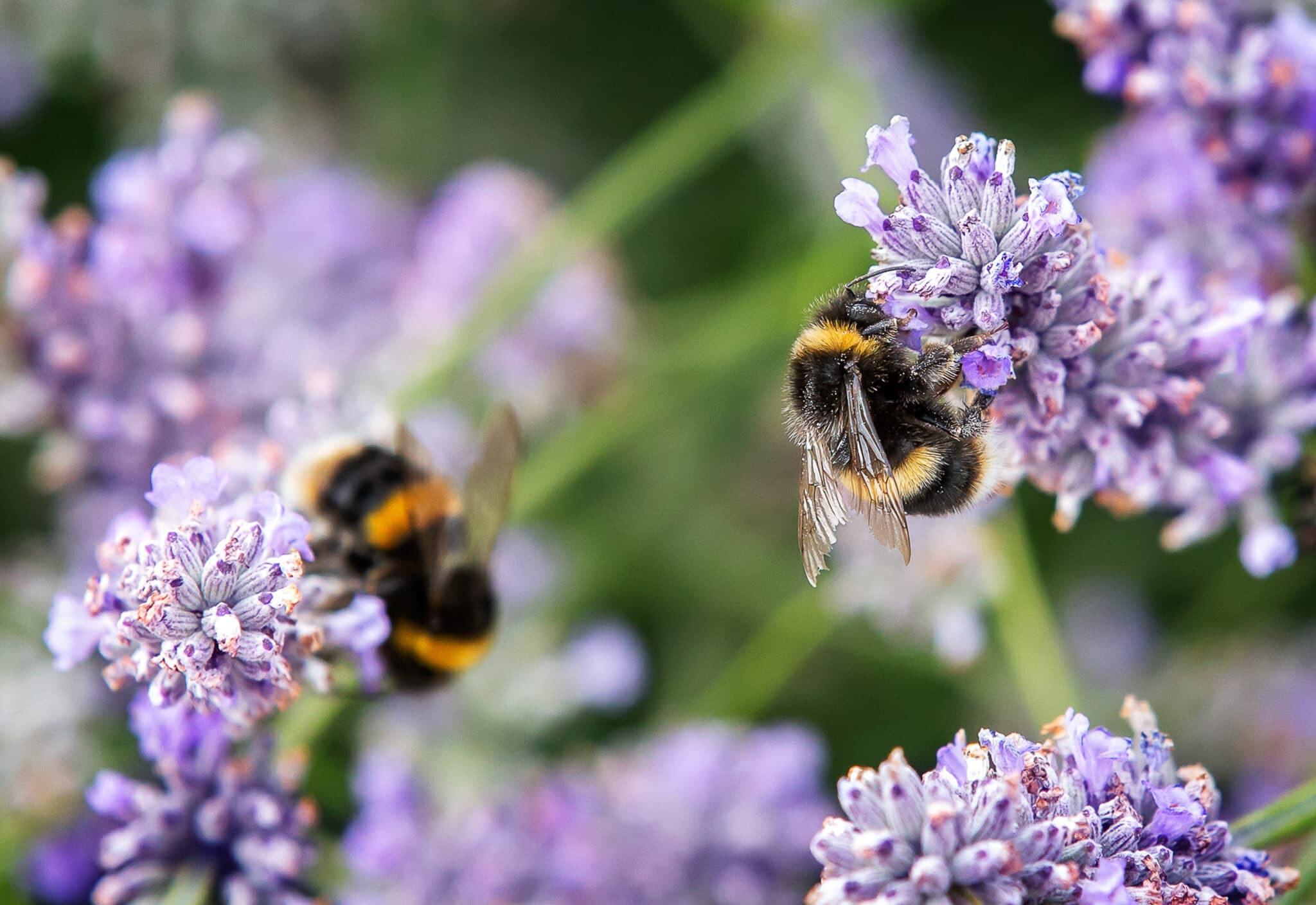
The Best Perennials For Bees
As easy as it is to plant a few seeds for annuals, perennials are the plants that provide the biggest bang for your buck. Plant them once and have flowers come back year after year. There are several perennial flowers that are recommended for bees and we’ve included them all on this list.
- Related: With wildflower populations falling due to land use, pollinators of all types need our help. Learn all about growing milkweed to help out monarch butterflies in this article.
Bee balm (Wild Bergamot)
Bees and butterflies both flock to bee balm. The plants have many clusters of tiny flowers that are abundant with nectar. Honey bees are particularly drawn to bee balm, as are butterflies and hummingbirds.
To grow bee balm in your gardens, plant in rich, moist soil in a bright, sunny location. Bee balm will tolerate shade in very hot summers but will flower better in full sun.
This perennial plant will come in various colors, including purple, pink, red, and white. White bee balm looks particularly beautiful in an entirely white moonlight garden.
- Bloom Time – mid-summer to Late Summer
- Hardiness – USDA Zone 3-9
- Height – 26-46″ dwarf varieties can grow less than 10″ high.
Learn More: Hummingbirds flock to Bee Balm, but many other flowering plants hummingbirds love. Check out our full list of plants that attract hummingbirds naturally to your yards and gardens.
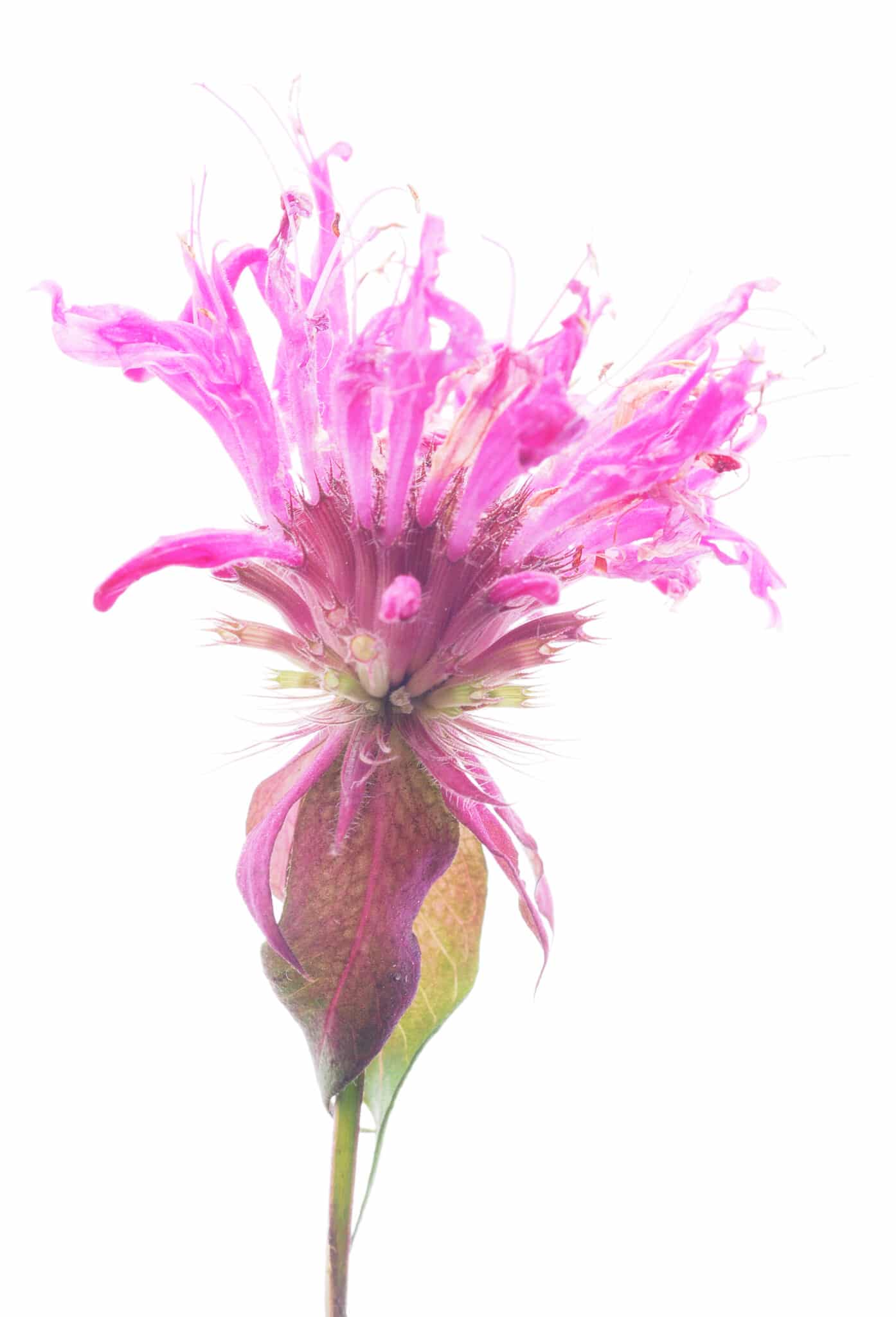
Purple Coneflower (Echinacea)
Coneflowers bloom from midsummer to fall, and this long bloom period keeps bees fed for months. The flat flower faces also make it easy for bees to access the pollen. Coneflowers are a native perennial favorite of North America and an excellent food source for wild and worker bees. Plus, they are drought-tolerant and deer-resistant, making them the best choice for a perennial garden bed.
These excellent, large, daisy-like flowers are well-loved by bees. Bees and butterflies feed on the large pollen-filled centers that last from mid-summer to fall. The bees are also attracted to the purple-colored flowers.
Coneflowers need full sun and like well-drained soil. They can grow in light shade or shaded areas in southern regions so long as there is a strong afternoon sun.
Coneflowers bloom in colors from pink, orange, or white to light creamy yellows and purples. For the bees, we want to plant the purple varieties.
- Bloom Time – Mid-Summer to Fall
- Hardiness – USDA Zone 4-8 (some varieties can be grown in zone 3)
- Height – 24-48″
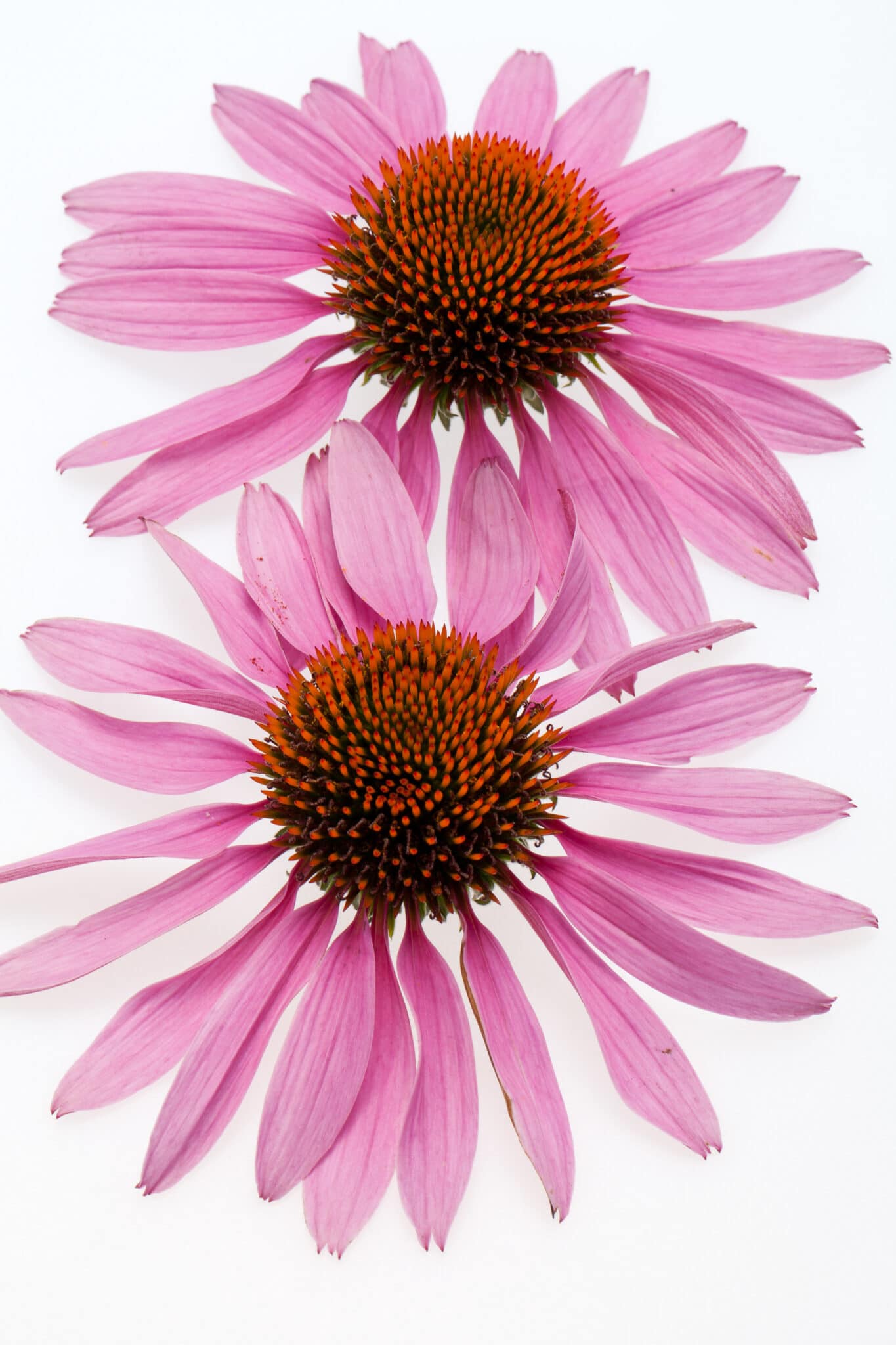
Poppies
Poppies are undemanding garden favorites that are easy to grow and require very little care. The plants put on an early spring show with lavishly bright ornamental flowers that make excellent cut flowers.
While other flowers are still growing and lack blooms, poppies provide a much-needed early-season food supply for the bees.
Plant outside in the full sun with well-drained soil. Poppies are not fussy about their soil but require good drainage to prevent their roots from rotting during the winter. Once established, poppies require very little care.
Poppies come in white, pink, coral, orange, or red.
- Bloom Time – Early spring to mid-summer
- Hardiness – USDA Zone 3
- Height – 24-48″
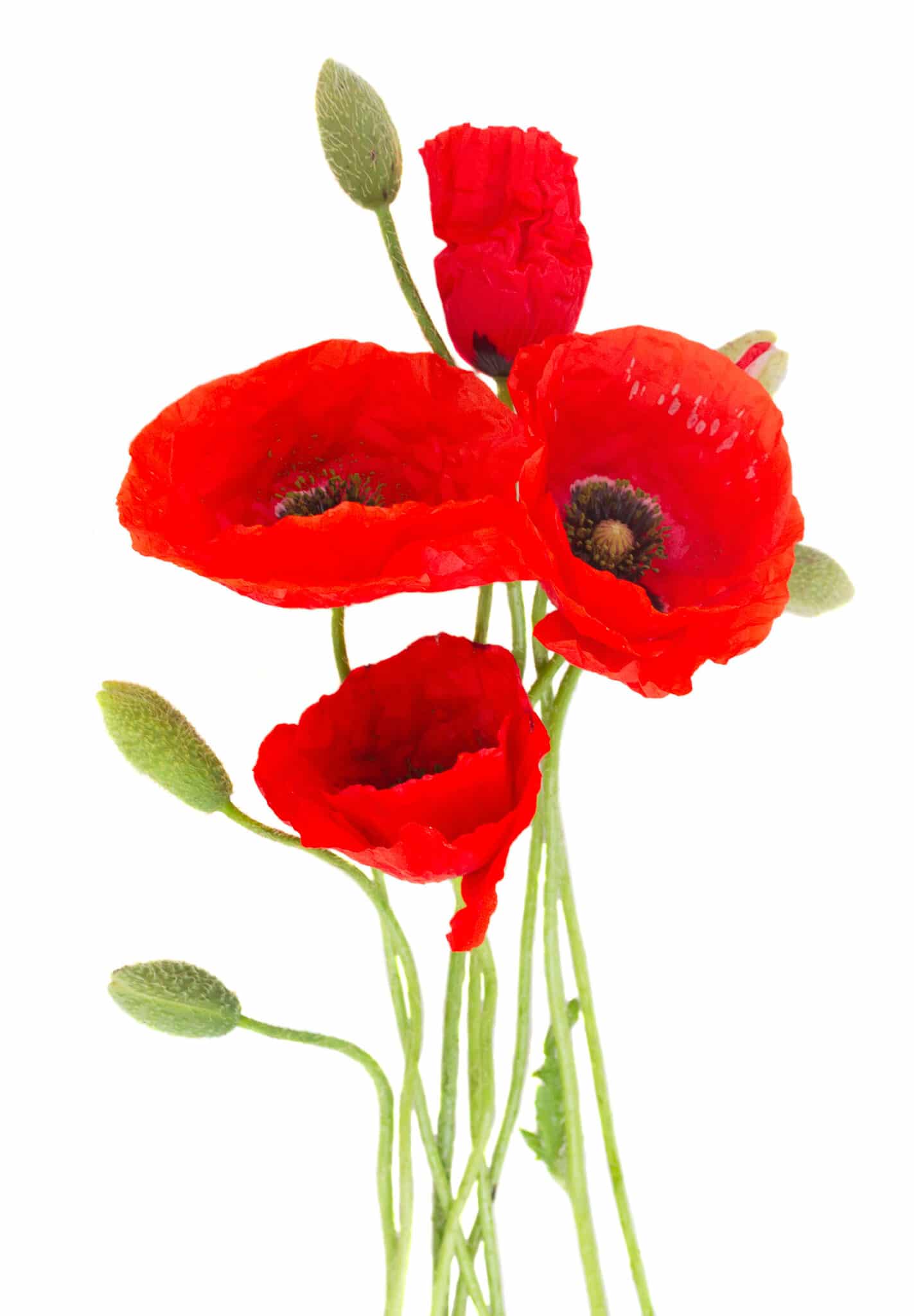
Aster
Perennial asters (not to be confused with annual asters) are flowering plants that belong to the daisy family. Many are wildflowers and native plants, making them a natural food source for bees. Asters are long-lasting flowering plants that provide lavish bright-colored single or double blooms well into fall. Long after many flowering food sources of summer are gone, asters provide a late fall meal for the bees.
Asters come in various colors, but the blue-violet-purple types are perfect for welcoming bees into your garden. These flowers look beautiful in a flower border and add color to the landscape during fall.
- Bloom Time – Late Summer to Fall
- Hardiness – USDA Zone 4
- Height – New England asters and New York Asters grow 36-60″ while Tatarian aster grows 72-96″
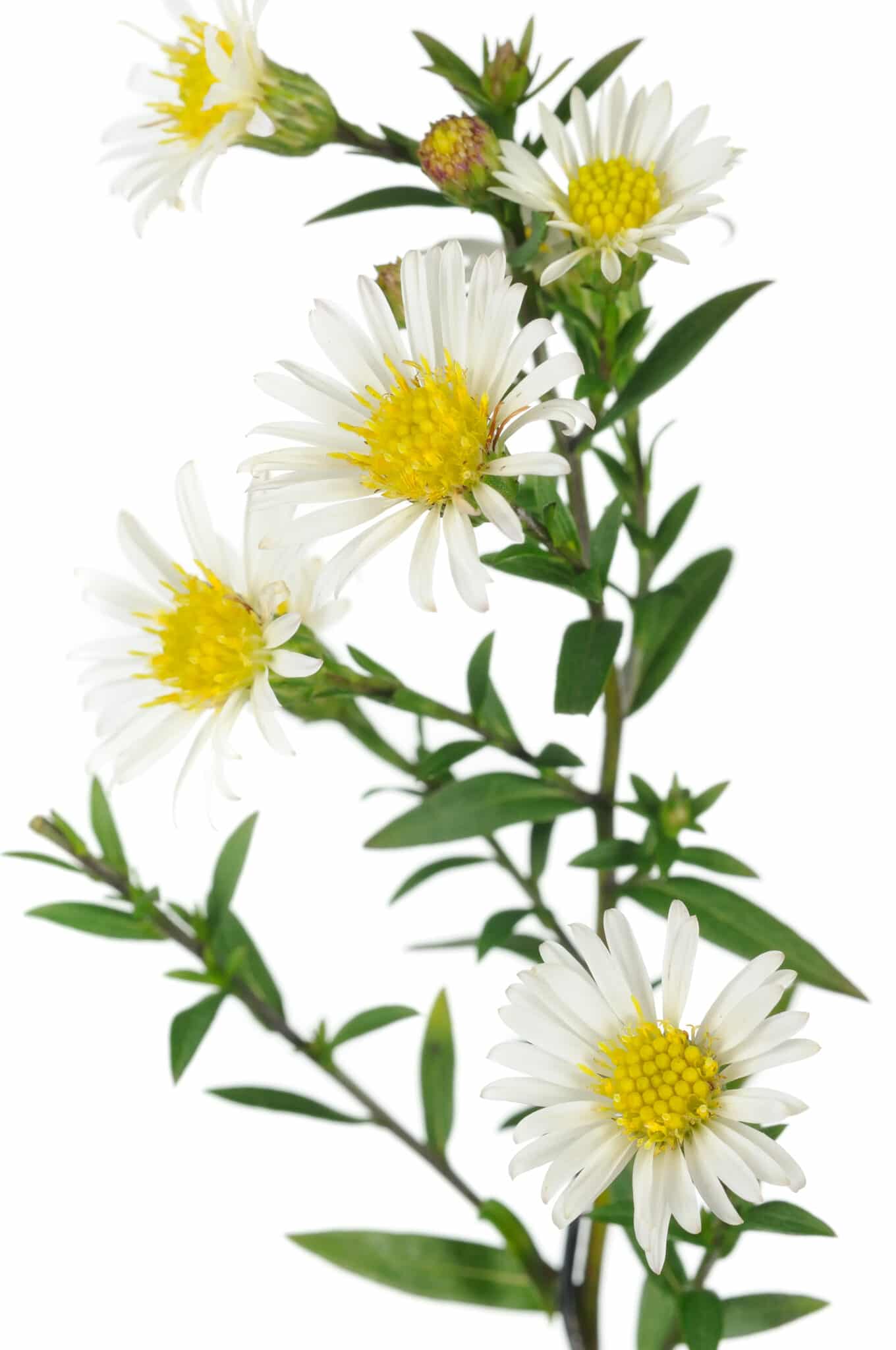
Phlox
The perennial phlox species are long-flowering plants that are showy and produce clusters. They grow well in full sun but tolerate light shade. Phlox enjoy well-drained moist soil with lots of organic matter.
Flowers come in a wide range of colors from white, purple, pink, blue, and lavender.
Bees will enjoy the flowers for their abundant pollen.
- Bloom Time – Late Summer to Fall
- Hardiness – USDA Zone 4
- Height – Summer phlox 36-48″, creeping phlox 9-12″, moss phlox 5-6″.
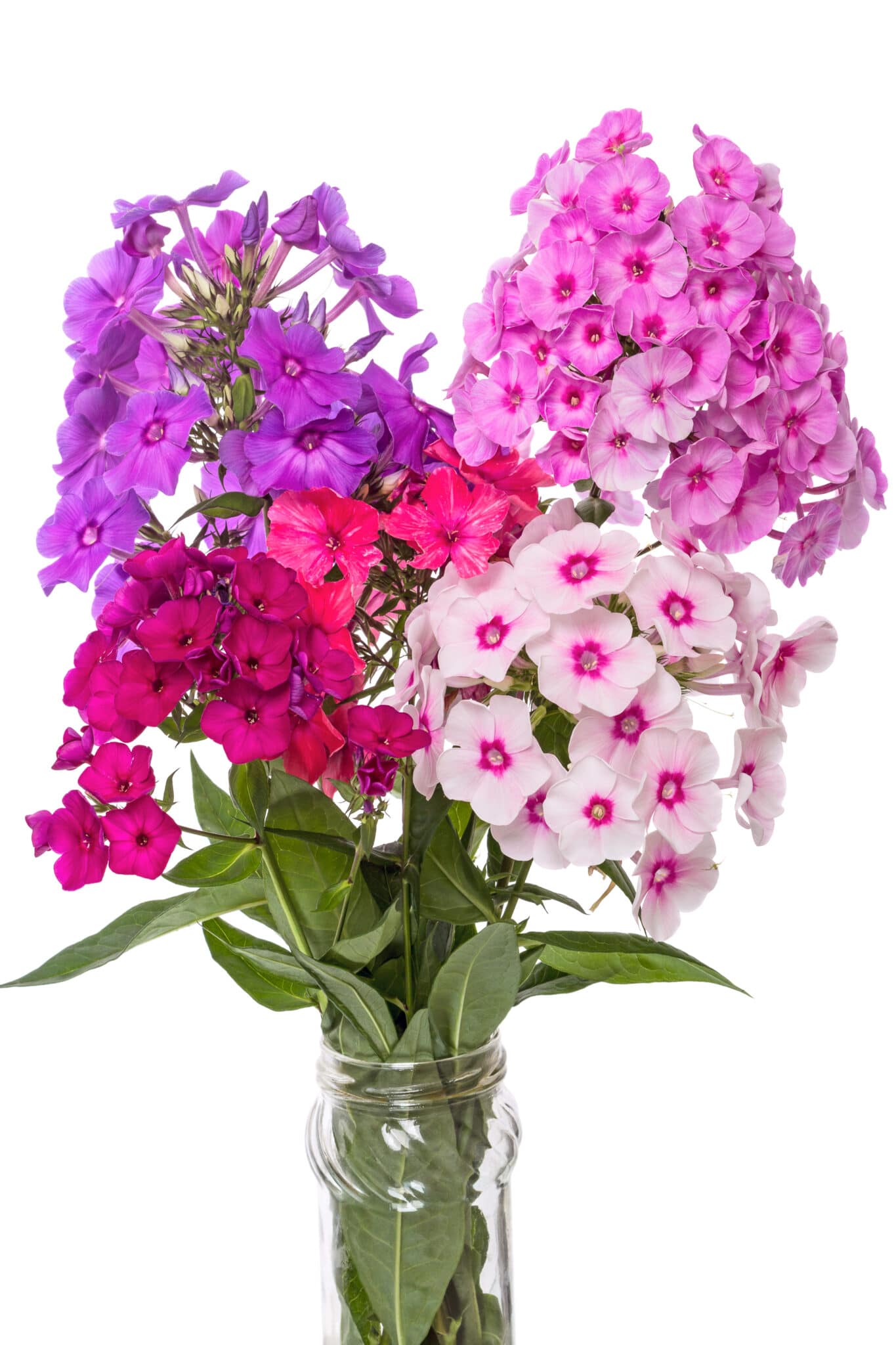
Shasta Daisies
The shape of the Shasta daisy attracts the bees to their flowers. Bees will land on the large yellow centers to feed on the pollen. Bumblebees are particularly attracted to Shasta daisies because the flowers have abundant pollen.
Shasta daisies like full sun, but they will bloom in partial shade. They require slightly acidic, well-drained soil with lots of organic matter. Shasta daisies can become invasive plants.
Shasta daisies are white.
- Bloom time – Mid-summer to the first frost
- Hardiness – USDA zone 3
- Height – 12-24″
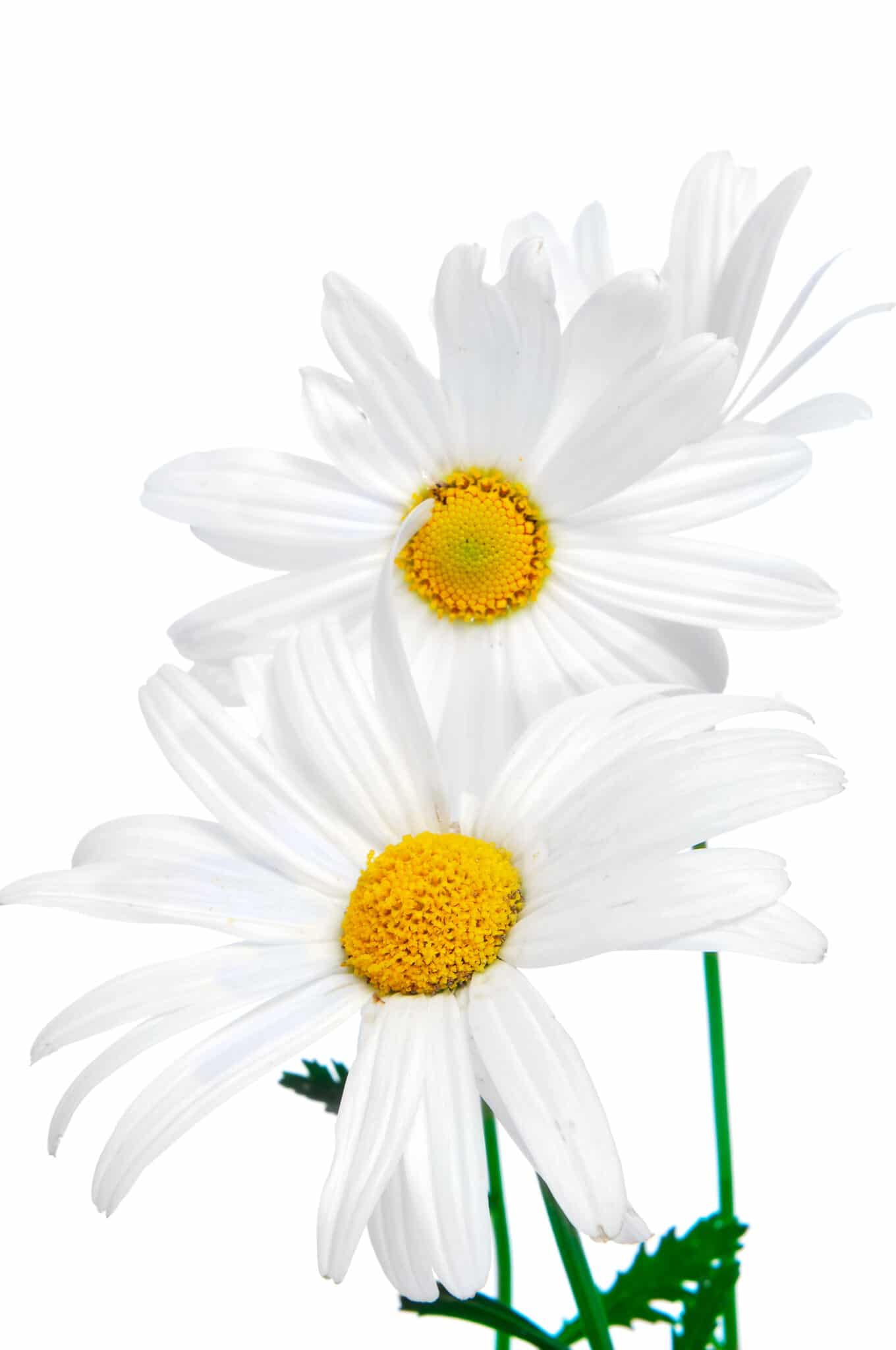
The Best Annuals for Bees
There are so many easy-to-grow annual flowers that pollinators love. We’ve included flowers that provide adequate pollen and nectar for the bees and are easy to access.
CornFlowers (Bachelor Buttons)
Cornflowers are among the best plants you can add to your bee garden. Their tiny, nectar-rich flowers are a favorite of honey bees. These long-flowering annuals will provide the bees with nectar from late June until September.
The daisy-like heads make it easy for the bees to access the nectar without much effort.
Cornflowers are also easy to plant. Directly sowing them into the garden in early spring guarantees a flower display in early summer.
Cornflowers have white, pink, and blue flowers, but blue attracts the bees the most.
- Bloom Time – Late Spring- Late Summer
- Height – 12-26″
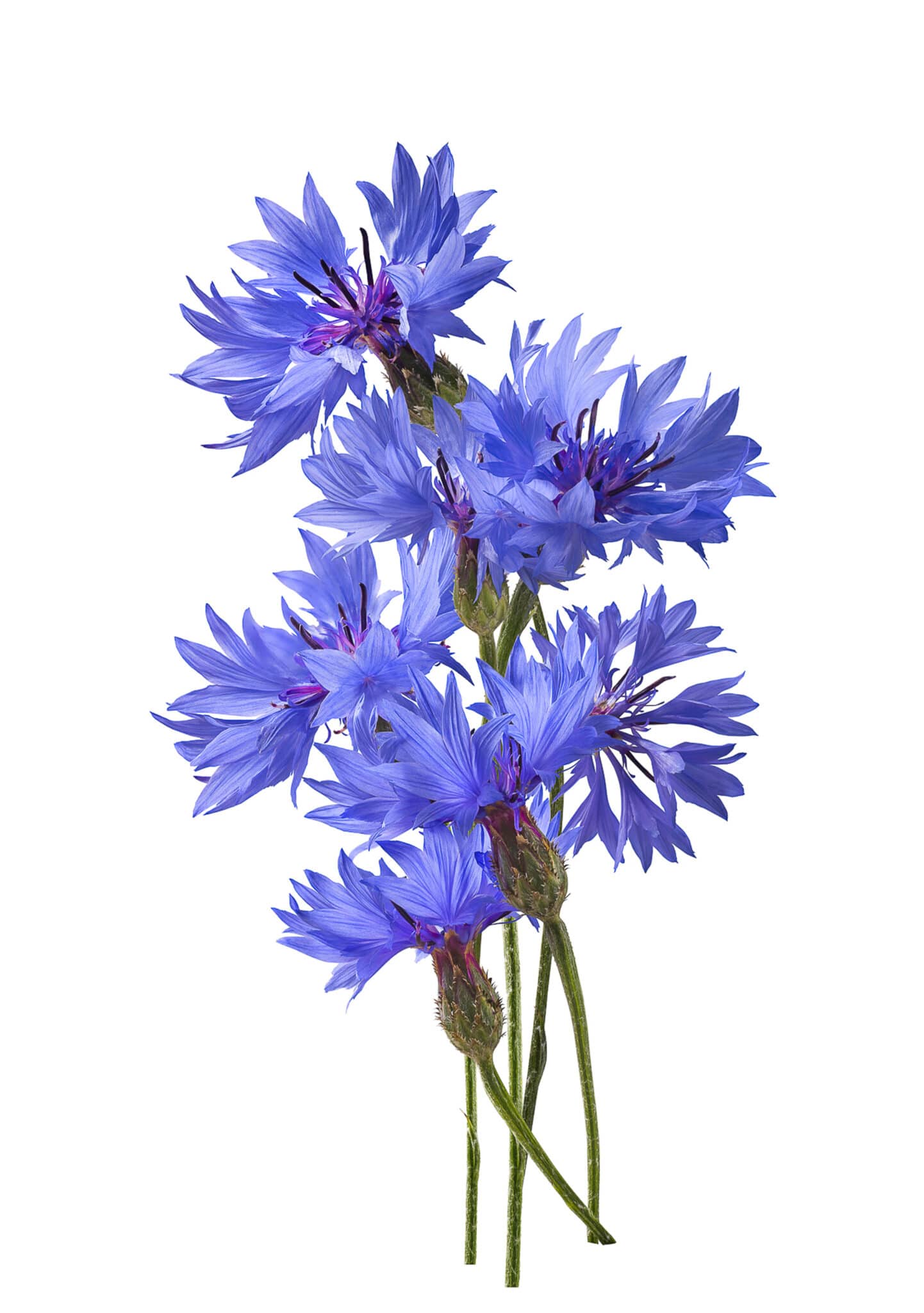
Zinnias
Zinnias are the workhorses of the flower garden. The plants are tender annuals that are easy flowers to grow from seed. The plants are almost carefree and produce abundant, vibrant blooms. The more you cut the flowers, the more they bloom, making it a win-win for you and the bees.
Zinnias will grow in poor soil, so if you’re looking for a flower to plant for the bees and don’t have the best soil, a few zinnia seeds might be a good choice. The plants like the full sun and thrive in hot, dry climates.
The flowers also continue to bloom through the heat of summer when the colder season blooms start to die back. At the height of summer, zinnias help to provide food for bees.
The flowers bloom in reds, scarlets, rose, coral, pink, orange, gold, yellow, and white ivory.
- Bloom Time – Early Summer – First Frost
- Height – 8-36″
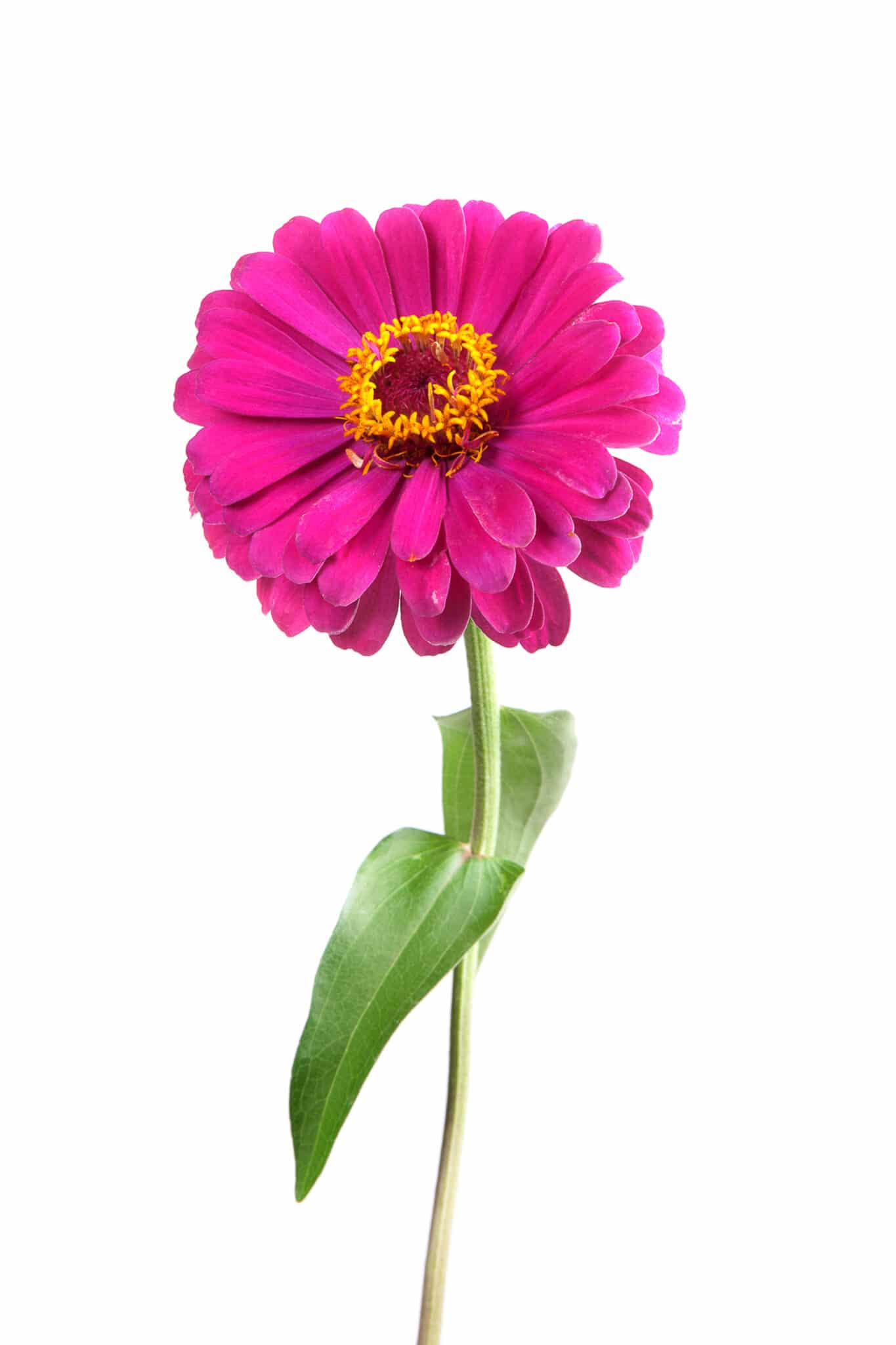
Sunflowers
Be sure to plant open-pollinated varieties or sunflowers that produce pollen. There are varieties of sunflowers bred to reduce pollen. Bees need pollen for protein and to feed their larvae, and old-fashioned sunflowers provide plenty.
Sunflowers are hardy annuals that will tolerate some frost, meaning they may last past your first frost in some zones. The flowers grow best in full sun and almost any soil.
- Bloom Time – Late Summer- Late Fall.
- Height – 12-72″
Related: How to grow sunflowers and benefits of sunflower plants.
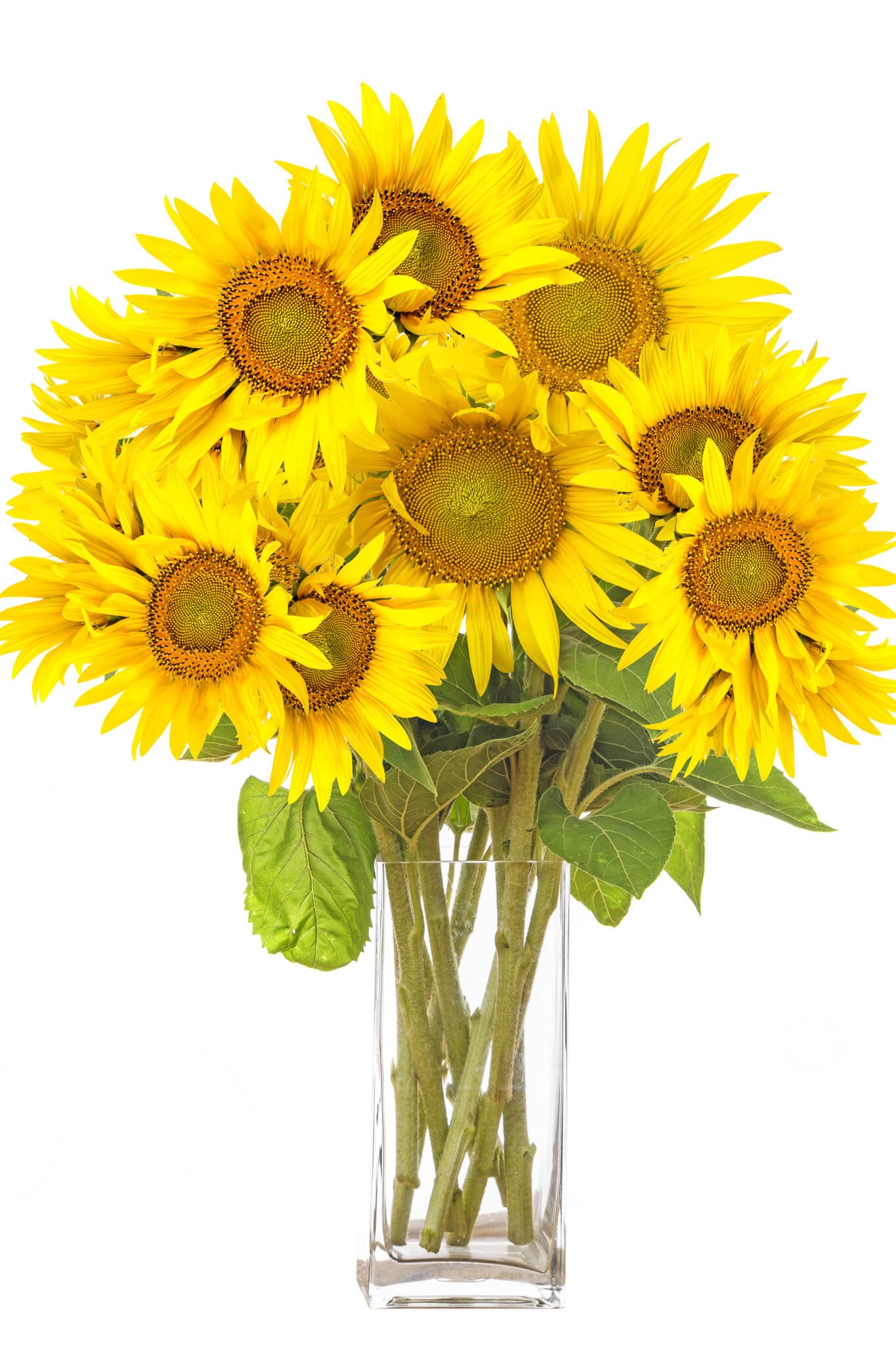
Cosmos
Nothing is easier to plant than cosmos. Of course, you can start cosmos indoors, but the plants are so proliferating that sowing them outdoors is always my go-to method. I often broadcast my seeds by hand; wherever I toss them, they grow.
Bees love the cosmos for their flat faces and easily accessible pollen. Cosmos are long-flowering plants that will continue to flower once spent flowers are removed. As a result, they have one of the richest available nectar sources.
One pack of seeds will create a lovely, abundant flower patch for you and the bees. The plants bloom in pinks, reds, magentas, and white flowers.
- Bloom Time – Early Summer to First Frost
- Height – 10-36″

Snapdragons
These showy, dramatic flowers come in various colors and make a dramatic statement in any garden. Plus, the bees love snapdragons. Snapdragons grow in full sun but can handle some partial shade.
When the flowers start to wilt and die back in summer due to the heat, cut them back 50%, and they may get a second flowering set in early fall. This re-flowering helps bees with an additional food source when most summer flowers die back.
Snapdragons come in orange, red, pink, rose, lavender, purple and yellow.
- Bloom Time – Early summer to mid-fall
- Height – 6-36″
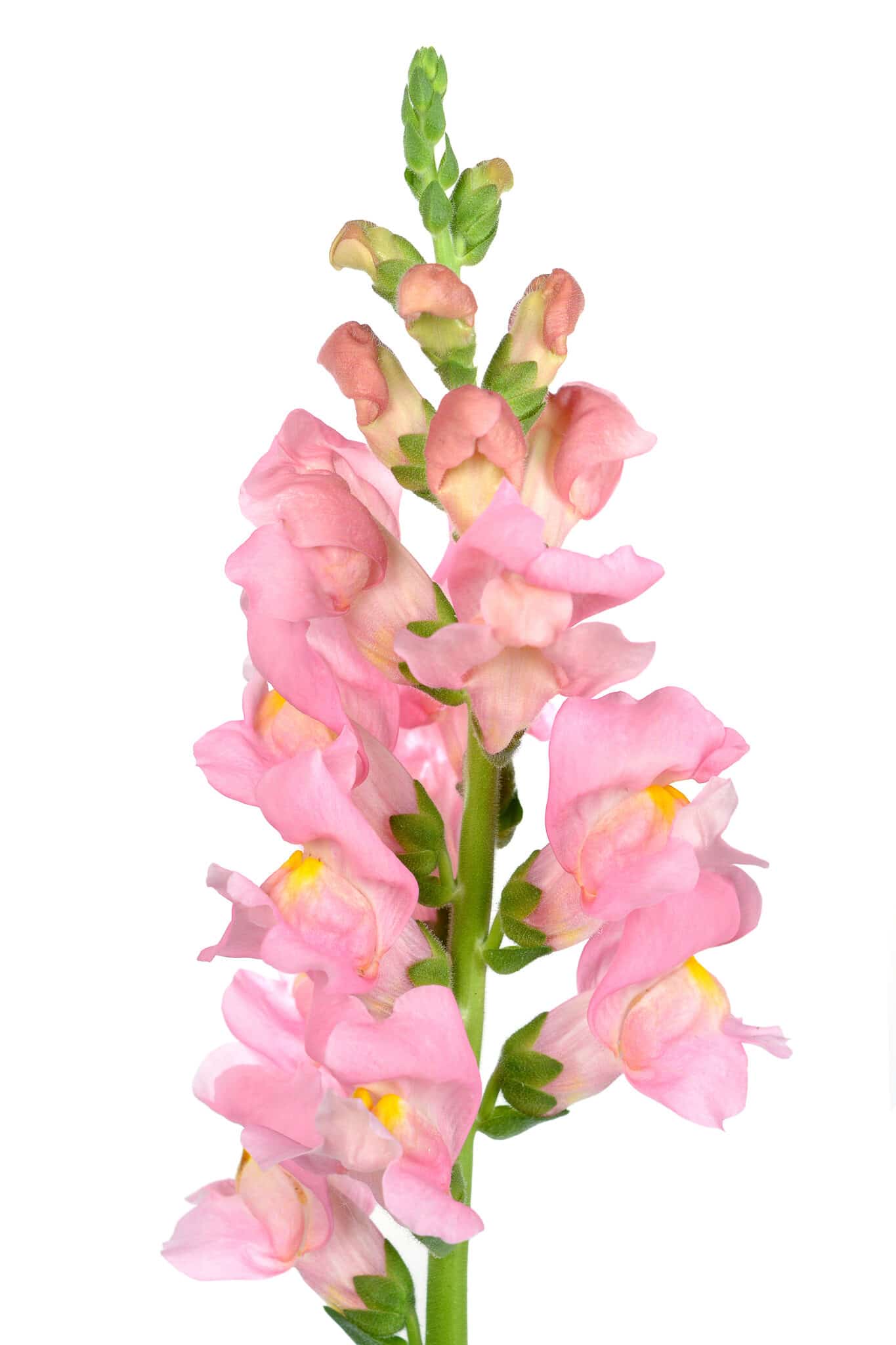
Calendula (Pot Marigold, English Marigold)
Calendula makes an excellent plant for bees as its flowers contain a significant amount of pollen and nectar per flower. It is also one of the earliest-blooming annual flowers in spring and will continue to bloom until the first frost.
Calendula is an exceptionally easy flower to grow so long as it receives full sun and is kept well watered, especially during hot, dry spells in the middle of summer. It is very frost tolerant, so you can plant calendula seeds in early spring as soon as the ground is workable.
The flower blooms come in yellow, orange, apricot, and gold colors.
- Bloom Time – Spring to first frost
- Height – 16-18″
See our complete guide for the many wonderful uses of marigolds!
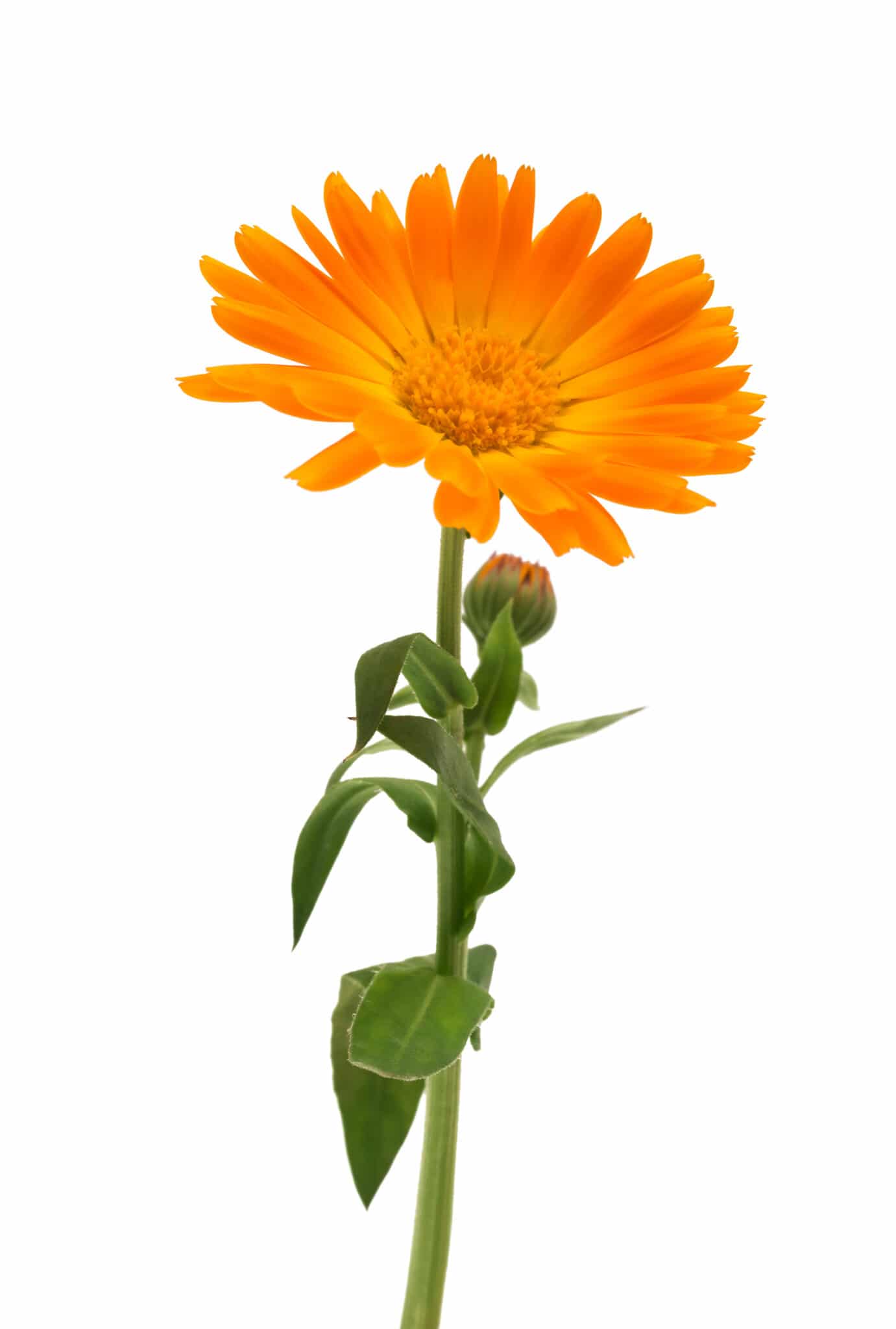
Nasturtium
Nasturtiums can be seeded directly into the garden and grow very quickly. These flowers will grow even in poor soil and require little care beyond watering. As a result, nasturtiums are excellent companion plants for vegetable gardens. In addition, they provide ground cover for other beneficial insects like spiders and beetles.
Nasturtiums have edible flowers, stems, seeds, and leaves. They have a spicy, peppery kick, and the flowers make lovely additions to salads. Nasturtiums are a plant both you and the bees can enjoy.
The plants are brightly colored with orange, magenta, creamy white, and yellow flowers.

The Best Flowering Herbs for Bees
There are many wonderful perennial herbs that you can add to your bee gardens. Strongly scented herbs will attract bees, and the long flowering time of the herbs on this list will provide pollen and nectar for the bees.
Chives
These beautiful plants flower early in almost all climates. When the first bees are out and about, the chives are ready with nectar.
Chive plants grow best in full sun, though they will tolerate light shade.
The soil needs to be moist, fertile, and well-draining.
Blooming chive plants range in color from white, pink, purple, and red.
- Bloom Time – Late spring or early summer
- Hardiness – USDA Zone 3
- Height – 6-12″
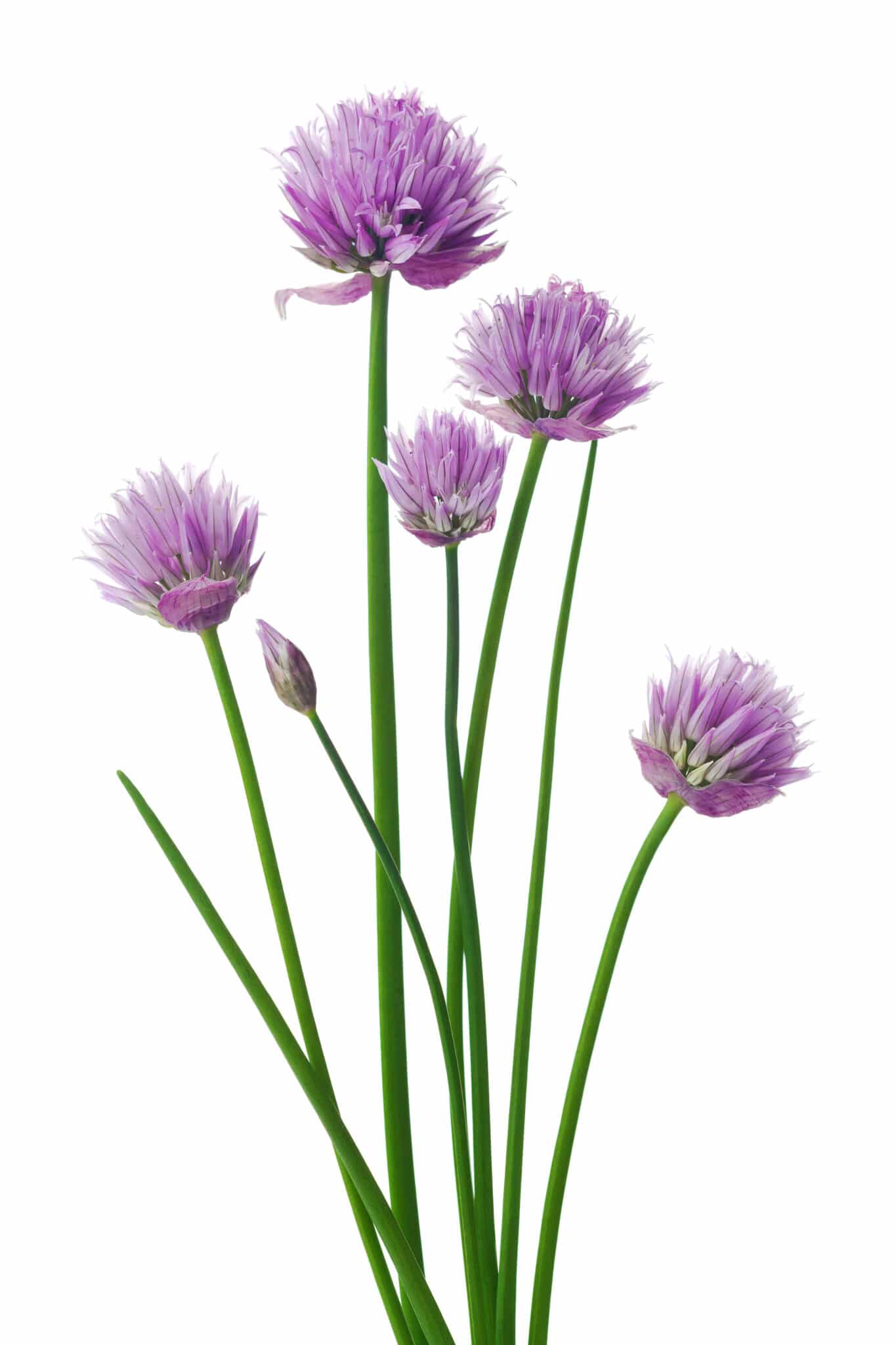
Rosemary
Rosemary attracts various bees, including mason, bumble, and honey bees. It is also excellent for other pollinators, like butterflies. Rosemary flowers quite early and long into the season, making it an attractive herb for bees. The flowers will provide an early feast for emerging bees in a season when not much is blooming.
You will want to grow rosemary plants in full sun and well-drained soil.
The flowers bloom in blue, purple, white, and pink.
- Bloom Time – Early spring – mid-summer
- Hardiness – USDA Zone 5
- Height – 12-72″
Lavender
Bees love lavender because it comes with a bright purple color that is easy to see and has a rich, heady scent that they can smell for miles. In addition, lavender provides nectar for bees in the early morning hours.
Lavender needs full sun, although it can tolerate partial shade. The plant grows best in low to moderately fertile soils. In colder regions, you can grow lavender in pots and move it indoors before winter.
Lavender flowers will bloom in violet-blue, rose, pale pink, and white colors and are excellent for drying.
- Hardiness – USDA zone 5-8
- Height – 12-36″

Expert Tips
- Select Native Flowers: Opt for native plant species as they are well-adapted to your local climate and soil conditions, making them more attractive and beneficial to local bee populations.
- Diverse Blooms: Plant various flowers that bloom at different times of the year. This provides a continuous food source for bees throughout the seasons, ensuring their sustenance.
- Choose Single-Petal Flowers: Single-petal flowers typically offer easier access to nectar and pollen for bees than double-petal varieties, making them more bee-friendly.
- Sunshine and Shelter: Position your bee-friendly flowers in sunny areas with some shelter from strong winds. Bees love warmth and appreciate a little protection while they forage.
- Avoid Pesticides: Refrain from using pesticides and herbicides in your garden, as they can harm bees and other beneficial insects. Embrace organic gardening methods to maintain a healthy ecosystem.
- Provide Water: Set up shallow water sources like birdbaths or dishes filled with water and pebbles. Bees need water for hydration, especially during hot weather.
- Group Plantings: Plant flowers in clusters or groups rather than singly. This makes them more visible and attractive to bees, encouraging frequent visits for pollination.
- Consider Bee Preferences: Research which flowers are particularly attractive to bees in your region. Certain species, like lavender, sunflowers, and bee balm, are universally loved by bees for their abundant nectar and pollen.
- Encourage Native Habitat: Incorporate native grasses, shrubs, and trees alongside your flower beds to create a welcoming environment for bees. These provide additional nesting sites and foraging opportunities.
- Practice Regular Maintenance: Regularly deadhead spent blooms and remove weeds to keep your flower garden tidy and productive. This encourages continuous blooming and ensures a steady supply of nectar and pollen for visiting bees.

FAQs
Growing bee-friendly flowers helps support declining bee populations, contributes to pollination in your garden and local ecosystem, and fosters biodiversity.
Not necessarily! Even a small balcony or window box can host a variety of bee-friendly blooms. Choose compact varieties and prioritize plants that thrive in containers.
While some insects may be attracted to your garden, the benefits of attracting pollinators far outweigh the potential drawbacks. Plus, many pollinator-friendly plants repel common garden pests.
By selecting a diverse range of flowers that bloom at different times of the year, you can provide a continuous food source for bees. Research flowering times and plan your garden accordingly.
Grab Our Ultimate PRINTABLE Garden Planner
With 39 pages of planning and organizing and the ability to customize your planner with the pages you need, you won’t need another planner for the rest of your gardening life!
$4.99 US

Final Thoughts
This is a fairly extensive list of flowers that you can plant in your gardens to help bee populations in your area. We’ve included easy-to-grow annuals, perennial herbs, and robust perennials that will help keep the bees fed for years to come.
Join The Conversation
We encourage you to leave your thoughts, questions, or tips in the comments below. Contact other gardeners in your area to exchange knowledge and foster a supportive gardening community. Together, we can cultivate thriving gardens and cultivate lasting connections. Happy gardening!
Related Posts

Author: Laura Kennedy
Writer & Owner of Little Yellow Wheelbarrow
Editor’s Note: This post was originally published on January 28, 2022. It was updated on March 5, 2024, to include a table of contents, expert tips and FAQs.










